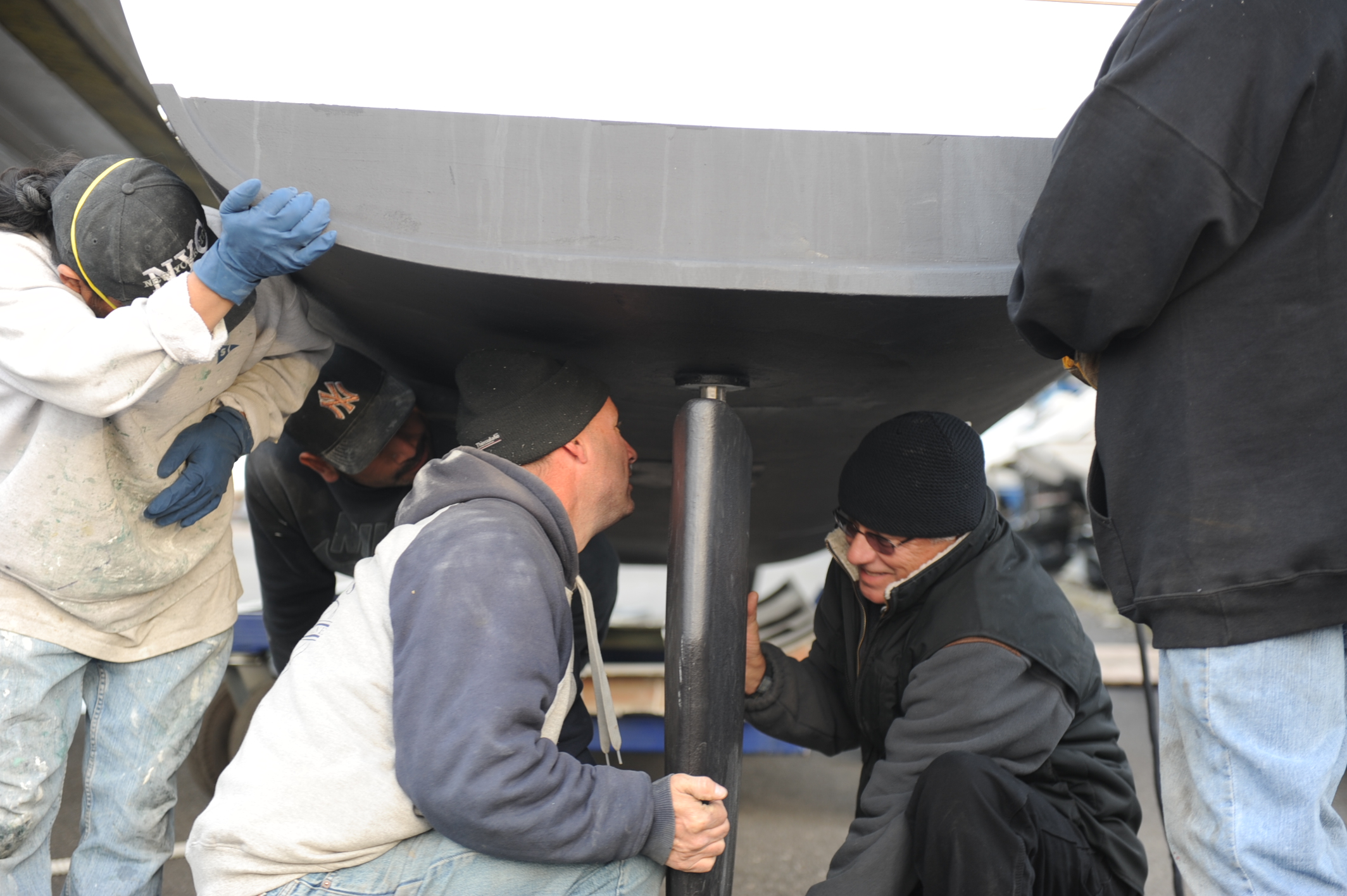Cruising Sailors Forum Archive
Yes, they can be unevenly loaded while turning. Boats with crossbar linkages, like the Alpha 42, often have it set with a differential connection between their rudders (called an Ackerman angle) so their rudders do not have the same attitude during a turn - each one is turning to the radius it needs.
Besides, the normal steering conditions are nothing like double fault mogul fields - do you really think catamarans are continually steering short, sharp turns and jumping left and right off of wave faces all over the ocean? Here is a bit of real experience - they don't steer any differently than a monohull. They take very little rudder movement to make small and infrequent adjustments while keeping a straight line through all seas. Downwind, they require almost no rudder at all because they track like a train on rails.
But I don't understand why you are making such a point about this? Are you still convinced the rudder surface area is too small? That is nonsense because every catamaran built has similar rudder area and none of your supposed problems are occurring. And these rudders are designed by very well-educated and experienced people. Certainly, if the area was too small, someone would have noticed that in the past 30yrs of producing tens of thousands of 35-80' boats around the world?
And the reports from the Alpha 42 never mention anything about having difficulties steering or controlling the boat before it was damaged. If the rudders were "too small", wouldn't they have less chance of being damaged because the loads would be less? Wouldn't "too small" work in favor of the smaller rudder stock?
Mark

Messages In This Thread
- Catamaran abandoned 300 miles off Norfolk...
- “The rudder had somehow been bent,” he said. “It was useless.”

- I hope I never

- Just watched the CG video. Now I got even more questions..

- More from the Alpha website.

- Tarjan is a master of spin
- Can't go by

- A fertile field for critics. Here's the account from Doane....

- refreshing to have somebody reporting from the bilge when one of these boats is abandoned.


- Charlie replies to the sailing forums Peanut Gallery...
- As usual, an excellent, measured analysis from John Harries...
- refreshing to have somebody reporting from the bilge when one of these boats is abandoned.
- The definition of "massive"....

- I don't think it was cutting corners
- Forces only increase in reality not in direct proportion to change of weight, speed, area, etc in direct proportion
- I very much think it was cutting corners...

- I don't think it was cutting corners
- I'd put 1 1/2" on a 28'er.


- I know both Hank and Charlie and I have one question for them . . .

- I think Hank and Charlie would argue with you that they were not in the Atlantic in February...

- Exactly...

- Your unexamined beliefs are showing, Jon
- What are you sailing, Mark?

- A Manta 40
- You're making the wrong generalizations


- I dunno

- Well you are right about that...

- I dunno
- "Unexamined", perhaps - but not necessarily unobserved...(grin)
- What are you sailing, Mark?
- Your unexamined beliefs are showing, Jon
- if there was ever a case for the owner picking up the rescue bill, this is it.
- I think Hank and Charlie would argue with you that they were not in the Atlantic in February...
- Charlie Doane posted an excelelnt account of the abandonment at
- I would have thought that the boat could have been sailed
- Now, after all this talk...
- I have the price list
- Well those are tiny little rudders, surprised they noticed them missing...

- The rudder size is not unusually small at all
- Agreed

- Two of them -- I wonder about that...
- forereaching depends on sail balance

- They aren't evenly loaded.
- forereaching depends on sail balance
- Agreed
- Here is a monohull example

- Those rudders are a compromise required by shallow draft. Nevertheless, the Alpha rudders were under bui

- Of course it is a compromise
- So I have become more interested in this shaft diameter thing

- Can't sit still any longer...
- Many monohull spade rudder shafts are seriously undersized.


- Mark, do you know another Manta 40 owner on Doublewide
- Yes, I know Doublewide well

- Yes, I know Doublewide well
- Those rudders are a compromise required by shallow draft. Nevertheless, the Alpha rudders were under bui
- The rudder size is not unusually small at all
- “The rudder had somehow been bent,” he said. “It was useless.”